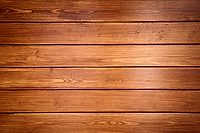Nanoparticle-Based Coating Prevents Ice Buildup
PITTSBURGH - Preventing the havoc wrought when freezing rain collects on roads, power lines and aircraft could be only a few nanometers away. A University of Pittsburgh-led team describes, in the Nov. 3 edition of the journal Langmuir, a nanoparticle-based coating that thwarts the buildup of ice on solid surfaces and is easily applied. The coating was developed in the lab of Di Gao, a Chemical and Petroleum Engineering Professor in Pitt's Swanson School of Engineering.
The paper, by lead author and Pitt doctoral student Liangliang Cao, presents the first evidence of anti-icing properties for a burgeoning class of water repellants, including the Pitt coating, known as superhydrophobic coatings. These thin films mimic the rutted surface of lotus leaves by creating microscopic ridges that reduce the surface area to which water can adhere. However, the authors note that because ice behaves differently than water, the ability to repulse water cannot be readily applied to ice inhibition. Cao's coauthors include Gao, Jianzhong Wu, a Chemical Engineering Professor at the University of California at Riverside, and Andrew Jones and Vinod Sikka of Ross Technology Corp. of Leola, PA.
The team found that superhydrophobic coatings must be specifically formulated to ward off ice buildup. Gao and his team created different batches made of a silicone resin solution combined with nanoparticles of silica ranging in size from 20 nanometers to 20 micrometers. They applied each variant to aluminum plates and then exposed the plates to supercooled water to simulate freezing rain.
Cao writes in Langmuir that while each compound containing silica bits of 10 or fewer micrometers deflected water, only those with silica pieces less than 50 nanometers in size completely prevented icing. The minute surface area of the smaller fragments means they make minimal contact with the water. Instead, the water mostly touches the air pockets between the particles and falls away without freezing. Though not all superhydrophobic coatings follow the Pitt recipe, the researchers conclude that every type will have a different particle scale for repelling ice than for repelling water.
Gao tested the coating with 50-nanometer particles outdoors in freezing rain to determine its real-world potential. He painted one side of an aluminum plate and left the other side untreated. The treated side had very little ice, while the untreated side was completely covered. He produced similar results on a commercial satellite dish where the glossed half of the dish had no ice and the other half was encrusted.
A video available on Pitt's website shows an aluminum plate glazed with Gao's superhydrophobic coating repelling the supercooled water. The video can be accessed at www.pitt.edu/news2009/ice.html.
The Langmuir paper is available on Pitt's website at www.pitt.edu/news2009/DiGao.pdf.
Looking for a reprint of this article?
From high-res PDFs to custom plaques, order your copy today!






